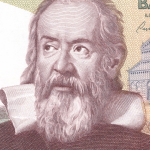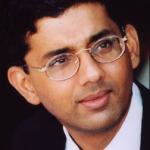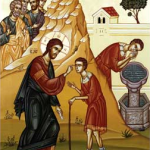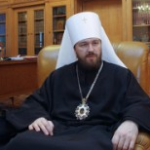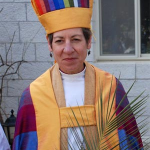
Deprecated: trim(): Passing null to parameter #1 ($string) of type string is deprecated in /home/aoiusa/public_html/wp-content/plugins/sexybookmarks/public.php on line 388
Deprecated: trim(): Passing null to parameter #1 ($string) of type string is deprecated in /home/aoiusa/public_html/wp-content/plugins/sexybookmarks/public.php on line 394
Deprecated: trim(): Passing null to parameter #1 ($string) of type string is deprecated in /home/aoiusa/public_html/wp-content/plugins/sexybookmarks/public.php on line 400
Source: Preachers Institute | Alice C. Linsley
From Preachers Institute: A convert to Orthodoxy from the Episcopal Church, Ms. Linsley renounced her priestly office in March 2004. She left the Episcopal ministry on the Sunday that Gene Robinson was consecrated and has not entered an Episcopal church since. After years of studying the question of women priests she is persuaded that this innovation is the root cause of the schism within Anglicanism. She is also the author of the excellent blog: Just Genesis.

 The Messianic priesthood of Jesus Christ is the true and single Form[1] of the Priesthood. Every priest, either living before Christ or after Christ’s appearing, stands as a sign to this one priesthood. The priesthood is unique (not to be confused with the office of shaman) and it is impossible to change it in any essential way.
The Messianic priesthood of Jesus Christ is the true and single Form[1] of the Priesthood. Every priest, either living before Christ or after Christ’s appearing, stands as a sign to this one priesthood. The priesthood is unique (not to be confused with the office of shaman) and it is impossible to change it in any essential way.
All attempts to change the priesthood, such as developed out of Protestant theology or the ordination of women, corrupt the sign so that it no longer points to Messiah. The Church itself has no authority to change the ontological pattern since the Priesthood existed before the Church and was not established by the Apostles.
The first priest mentioned in the Bible is Melchizedek who lived during the time of Abraham. The author of Hebrews tells us that Melchizedek is a type pointing to Jesus as the true Form/Priest:
“This hope we have as an anchor of the soul, both sure and steadfast, and which enters the Presence behind the veil, where the forerunner has entered for us, even Jesus, having become High Priest forever according to the order of Melchizedek.” (Hebrews 6:13-20)
Melchizedek represents the Messianic priesthood, but he doesn’t represent the beginning of the priesthood. Cain and Abel acted as priests when they offered sacrifices in Genesis 4. This means that the priesthood was not established by the Apostles, it existed long before them. According to Saint John Chrysostom, a Church Father, the priesthood “is ranked among heavenly ordinances. And this is only right, for no man, no angel, no archangel, no other created power, but the Paraclete himself ordained this succession…”.[2]
If the Apostles are not the source of the Christian priesthood, what is the source? It can only be the eternal Christ, who is the eternal Form/Priest. Through Jesus Christ the eternal truth signified by the Priesthood comes into focus. He alone is Priest, fulfilling atonement through His own shed blood. The Priesthood therefore, is necessarily tied to the Blood of Jesus Christ. Where people deny the saving nature of Jesus’ Blood there can be no true Priesthood. A priest who denies the necessity of repentance and trust in Jesus’ Blood as the means of forgiveness, is a false priest.
What can we say about the Priesthood?
First, we can say that the priesthood is verifiably one of the oldest religious offices in the world, traced back to at least 7000 B.C. It emerges out of the Afro-Asiatic civilization which, at its peak, extended from the Atlantic coast of modern Nigeria to the Indus River Valley. The Brahmanas (Hindu Priest Manuals) [3] express the richness of this institution. The “priest” offered sacrifice at fire altars which they constructed according to geometry and at the proper seasons which they determined through astronomy. The Vedas also reveal the danger of a priestly order that becomes too powerful and self-serving, as happened also with the priests of Jesus’ time. When the True Priest appeared among them, they were unable to recognize Him because their understanding of the office of the Priest had become corrupted.
The priest emerges out of primeval perceptions of blood as the substance of life, purity and righteousness. We are able to verify that this conception is very old because it has a wide linguistic dispersion.[4] The Hebrew root “thr” = to be pure, corresponds to the Hausa/Hahm (West Africa) “toro” = clean, and to the Tamil (India) “tiru” = holy. All are related to the proto-Dravidian (Pakistan) “tor” = blood. These cognates point to an ancient priesthood for which purity, holiness and blood are related concepts.
From the dawn of time humans recognized that life is in the blood. They saw offspring born of water and the blood. They knew that the loss of blood could bring death. Killing animals in the hunt also meant life for the community. They sought ways to ensure that their dead entered life beyond the grave, especially their rulers who could intercede for them before the Deity.
This is why peoples around the world covered their dead rulers in red ochre dust as early as 80,000 years ago.[5] This red dust is a sign pointing to the Pleromic Blood of Jesus.[6]
God planted eternity in our hearts so we innately know that Christ’s Blood is not only redemptive, but also the source of our life. This is what St. Paul calls “the mystery of Christ”. As his second missionary journey, Paul preached that,
“in Him [Jesus Christ] we live and move and have our being.” (Acts 17:28)
He also wrote:
“In Him we have redemption through His blood, the forgiveness of sins, according to the riches of His grace which He made to abound toward us in all wisdom and prudence, having made known to us the mystery of His will, according to His good pleasure which He purposed in Himself, that in the dispensation of the fullness of the times, He might gather together in one all things in Christ, both which are in heaven and which are on earth.” (Ephesians 1:7-10)
These words follow Paul’s explanation of the saving work of Jesus Christ in Ephesians:
But now in Christ Jesus, you that used to be so far apart from us have been brought very close, by the blood of Christ. For He is peace between us, and has made the two into one and broken down the barrier which used to keep them apart, actually destroying in His own person the hostility caused by the rules and decrees of the Law. This was to create one single man in Himself out of the two of them and by restoring peace through the Cross, to unite them both in a single body and reconcile them with God. In His own person He killed the hostility… Through Him, both of us have in one Spirit our way to come to the Father. (Eph. 2:13-14)
Second, we know that the priest functions to mitigate blood guilt. Anthropologists have noted that there is considerable anxiety about shed blood among primitive peoples.[7] Among the Afro-Asiatics, the priesthood served to relieve blood guilt and anxiety and to perform rites of purity. The priest addresses impurities by seeking purification through blood sacrifice. He also addresses anxiety about shed blood through blood sacrifice.
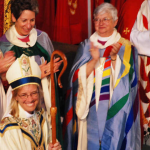 Third, we know that no woman served as a priest in any official capacity. Women didn’t enter the area of the altar where blood was offered in animal sacrifice. We know this because the Afro-Asiatics, from whom we received the priestly office, believed that the blood shed by men and women were never to mix or even be in the same place. Sacred law prohibited the blood shed in killing (male) and the blood shed in giving life (female) to share the same space.
Third, we know that no woman served as a priest in any official capacity. Women didn’t enter the area of the altar where blood was offered in animal sacrifice. We know this because the Afro-Asiatics, from whom we received the priestly office, believed that the blood shed by men and women were never to mix or even be in the same place. Sacred law prohibited the blood shed in killing (male) and the blood shed in giving life (female) to share the same space.
This binary worldview supports clear distinction between life and death.
The same distinction of life-taking and life-giving is behind the law that forbids boiling a young goat in its mother’s milk (Deut. 14:21).
The only Christian denomination to have women priests is the Episcopal Church. Not surprisingly, the Episcopal Church also has a Seminary President, Katharine Ragsdale, who recently stated in a sermon:
Let me hear you say it:
Abortion is a blessing and our work is not done.
Abortion is a blessing and our work is not done.
Abortion is a blessing and our work is not done.[8]
Women Leaders in the Church are Never Priests
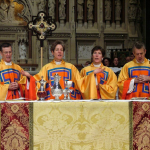 In this essay we have discussed the origins and nature of the priesthood. Holy Tradition and Scripture reveal numerous women in positions of leadership; Deborah and Huldah among them. Daughters of priests are remembered as great women also, Asenath and Zipporah among them. However not a single women can be identified as a priest in Holy Tradition or the Bible. It is clear then that women have never been priests and that the nature of the priesthood from the beginning has been such that it pertains only to men.
In this essay we have discussed the origins and nature of the priesthood. Holy Tradition and Scripture reveal numerous women in positions of leadership; Deborah and Huldah among them. Daughters of priests are remembered as great women also, Asenath and Zipporah among them. However not a single women can be identified as a priest in Holy Tradition or the Bible. It is clear then that women have never been priests and that the nature of the priesthood from the beginning has been such that it pertains only to men.
So called “priestesses” of ancient Greece were not priests at all. They were seers who pronounced oracles in a trace state, like shamans. Likewise, Shinto “priests” are also shamans as they deal with the spirits. Use of the term “priest” in both cases reveals ignorance about the different worldviews of priests and shamans [8], an ignorance (or bias?) that pervades 20th century academia.
God has not changed the office of the priesthood. It survives in Christian communities that preserve catholic Holy Tradition. [9] When the priesthood is held high and priests live above contamination, the world is drawn to Jesus Christ. This happens because there is only one Priesthood: the Messianic Priesthood. There is only one Priest: Jesus Christ, and there is only one Blood, Christ’s pleromic blood which is the life of the world. St. Paul expresses it this way:
“There is one Body, one Spirit, just as one hope is the goal of your calling by God. There is one Lord, one Faith, one baptism, and one God and father of all, over all, through all and within all.” (Eph. 4:4-5)
As C.S. Lewis has written:
“With the Church, we are farther in: for there we are dealing with male and female not merely as facts of nature but as the live and awful shadows of realities utterly beyond our control and largely beyond our direct knowledge. Or rather, we are not dealing with them but (as we shall soon learn if we meddle) they are dealing with us.” (From C.S. Lewis’ “Priestesses in the Church?”)
NOTES
1. Plato taught that there is but one true Form of all observable entities and this Form exists in eternity (outside of time and space). Species of natural objects observed in the world are merely reflections of their true Forms. We know what trees are because one Form/Tree exists, which our souls intuitively recognize.
2. St. John Chrysostom, On the Priesthood, St. Vladimir’s Seminary Press (1977), p. 70.
3. The Brahamas are Vedic texts that provide instruction for Hindu priests. These texts give detailed instructions about sacrifices offered at altars of fire. They also make it evident that the Priest is a close associate of the King and the King relies heavily upon the Priests’ services. This is evident in the Priest-King relationship that we find n the Old Testament. For more on this, see Bujor Avari’s book India: The Ancient Past, pp. 77-79.
4. Anthropologists have discovered that the wider the dispersion of a culture trait the older the trait.
5. Sophisticated mining operations in the Lebombo Mountains of southern Africa reveal that thousands of workers were extracting red ochre which was ground into powder and used in the burial of nobles in places as distant as Wales, Czechoslovakia and Australia. Anthropologists agree that this red powder symbolized blood and its use in burial represented hope for the renewal of life.
6. “Pleroma” means the fullness or totality of all things. Blood symbolizes life. Since the Blood of Jesus works to bring life both in time and in eternity, the Blood of Jesus is perceived to be the original source of life and the means of eternal life.
7. This has been discussed in many of the great monographs: Benedict’s Patterns of Culture, Lévi-Strauss’ The Raw and the Cooked, and Turnbull’s The Forest People.
8. Read the full report on President Ragsdale here: http://www.virtueonline.org/portal/modules/news/article.php?storyid=10231
9. To read about the difference between the worldview of the Priest and the Shaman, go here: http://jandyongenesis.blogspot.com/2007/08/shamanic-practice-and-priesthood.html
10. To read more about Holy Tradition surrounding the Messianic Priesthood, go here.
Source
© 2010, Preachers Institute. All rights reserved.

